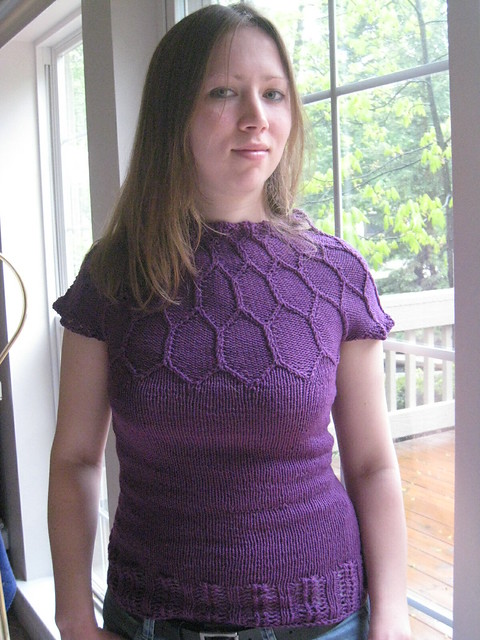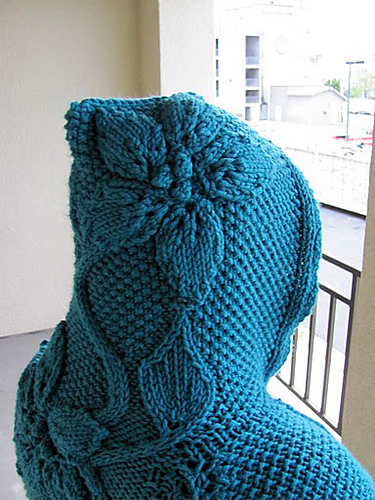I know it is spring. I know, you are still feeling guilty about those projects that you started and wanted to wear for winter. I know, I know. I have the same problem. But… and I say this with all earnestness, you need to be thinking about summer, and you need to be thinking about summer with the Classic Silk Mayfaire Camisole. It’s by Corrina Ferguson, who is a solid designer. I especially like her shawl and sock patterns, which she occasionally offers deals on her blog, so you should keep an eye on it.
It’s a Classic Elite pattern, and I think by now you all know about how much I love Classic Elite patterns. I would knit for them in a heartbeat. It’s a camisole (really a tanktop), so really, it’ll be fast to finish, not use that much yarn, and gosh, could be worn plain in the summer, under jackets in the fall, and under sweaters in the spring. Why, if you wanted to you could crank up the heat in winter and wear it as pajama tops. And in Classic Elite Classic Silk, I would wear it every chance I get.
Plus, it’s a free pattern. Yes,
Oh, all right, you want to hear what I think about it. Well, if you insist…
What people are doing with it:
The word on the street is you want to swatch first. While some people were about to work it with the same yarn, or even different yarns, and get gauge, this is a silk blend we’re talking about, and sometimes that makes for some funky knitting. Swatch first, throw it in with your wash, and then see what happens.
A lot of people make substitutions for this camisole, without any problem. The great thing about this pattern is the shaping is included. The not so good thing is the shaping is included, and if you aren’t quite as curvy, or more curvy than the model, you might need to make some mods. One person did the waist shaping for the medium, and then did the bust shaping for the small, because she wasn’t quite “gifted” in the chest to fill out the medium. You might have to do the same. Make sure you measure and swatch, and you’ll be fine.

Last, remember that the shoulder straps are going to stretch with time. This has never not been my experience, but then, one of you readers will be the first to point out to me that yours did not stretch at all. If anything, make them just a SMIDGEN smaller than you want, and after wearing it once or twice it will hit where you need it. That’s my two cents, at least.
The Specs:
Published August 2010
Finished Meas: 30 (34, 38, 42, 46, 50)”
MATERIALS:
Classic Silk by Classic Elite (50% cotton, 30% silk, 20% nylon; 50 gram ball = approx 135 yards)
• 3 (4, 4, 5, 6, 6) balls 6905 Old Lilac
Needles:
• One 24” circular size US 6 (4 mm)
Or size to obtain gauge
• Five stitch markers (4 of one color; 1 of another for BOR)
• Removable markers or safety pins
HEY! For those of you who frequent the Yarn Spot, we’re doing a knit along with this pattern. You should join us. Details are on my classes page.
Until later Yarnies,
Jen
















